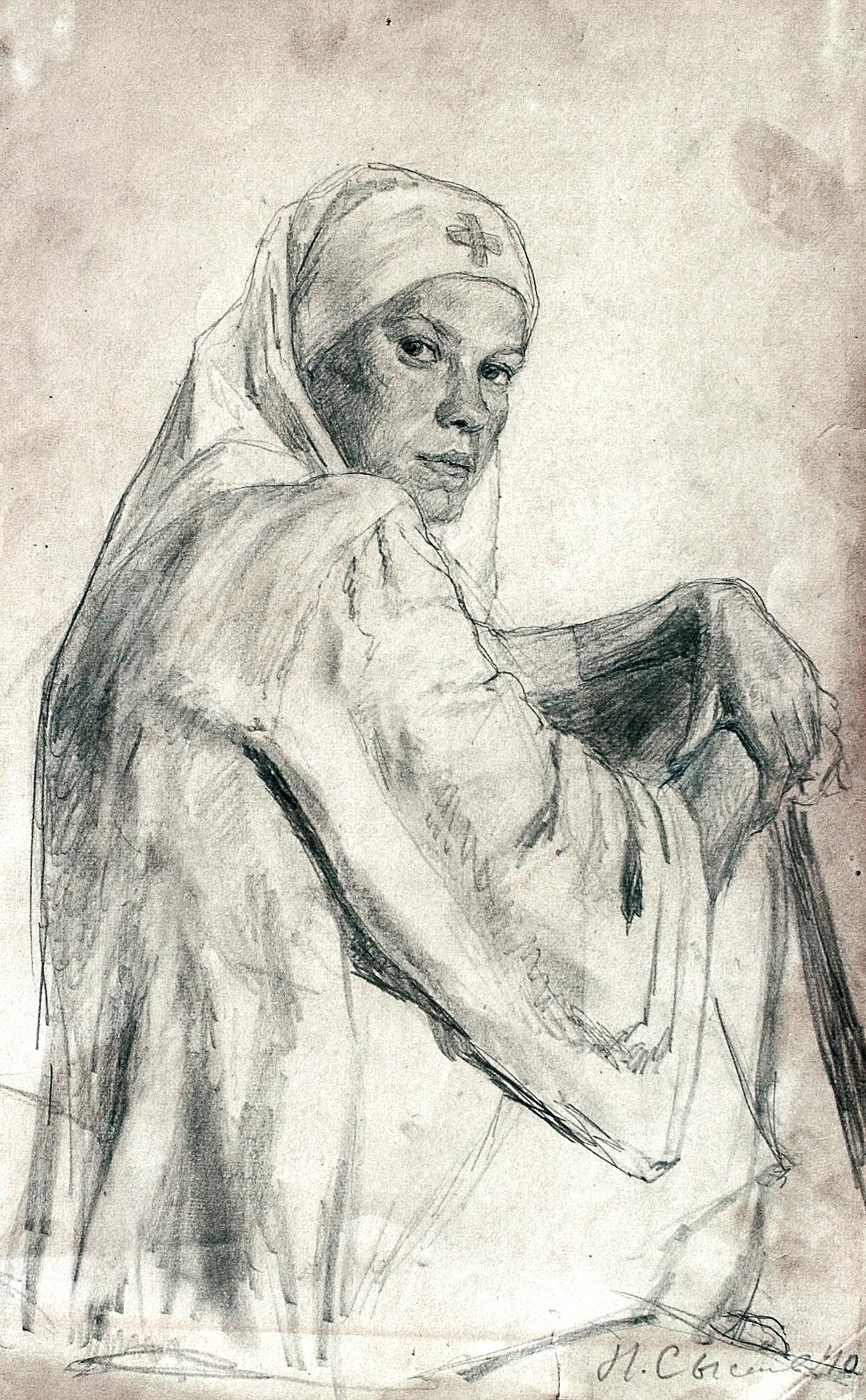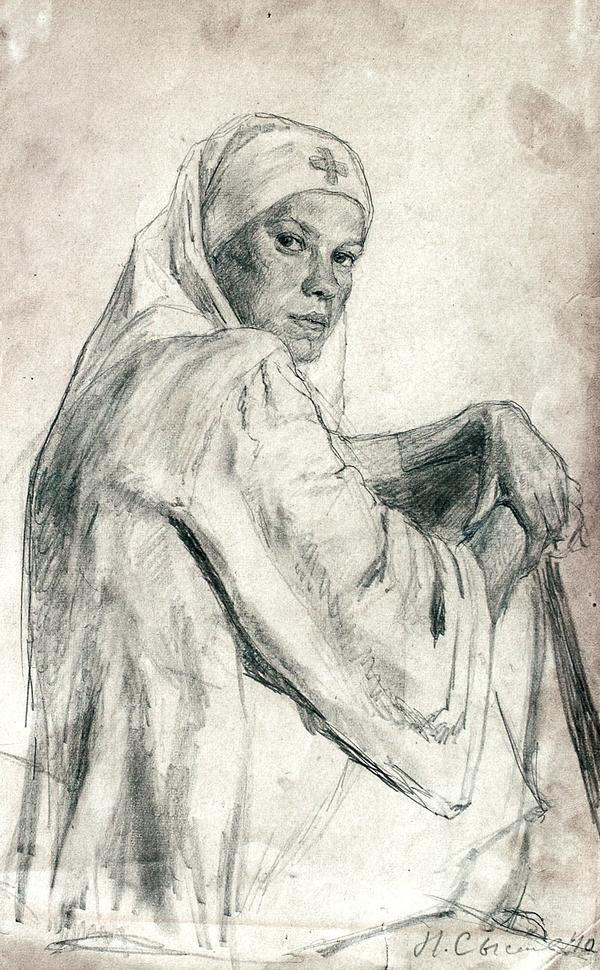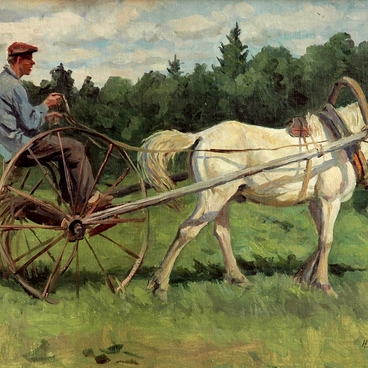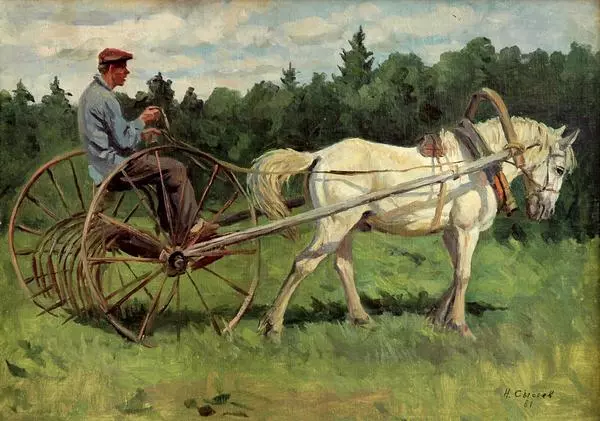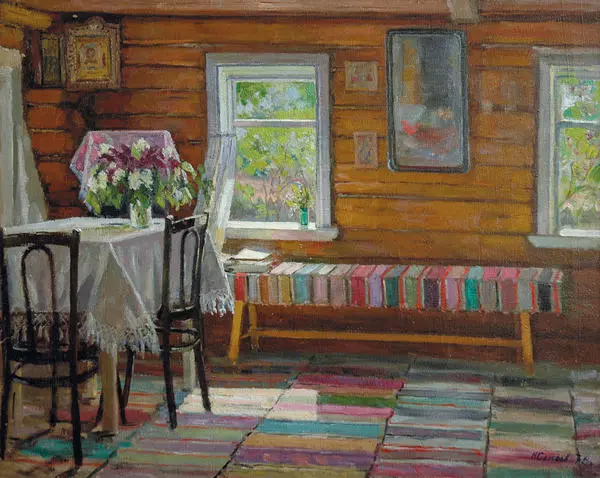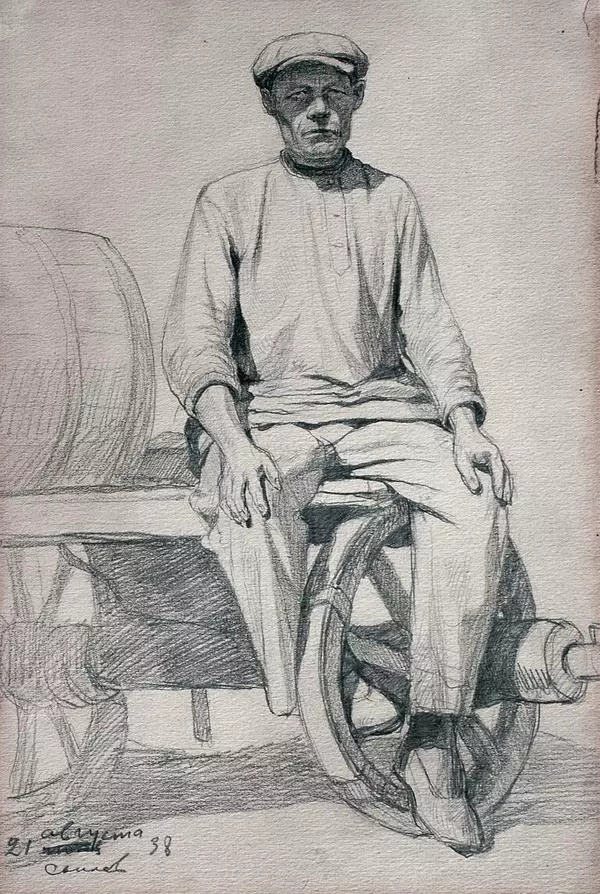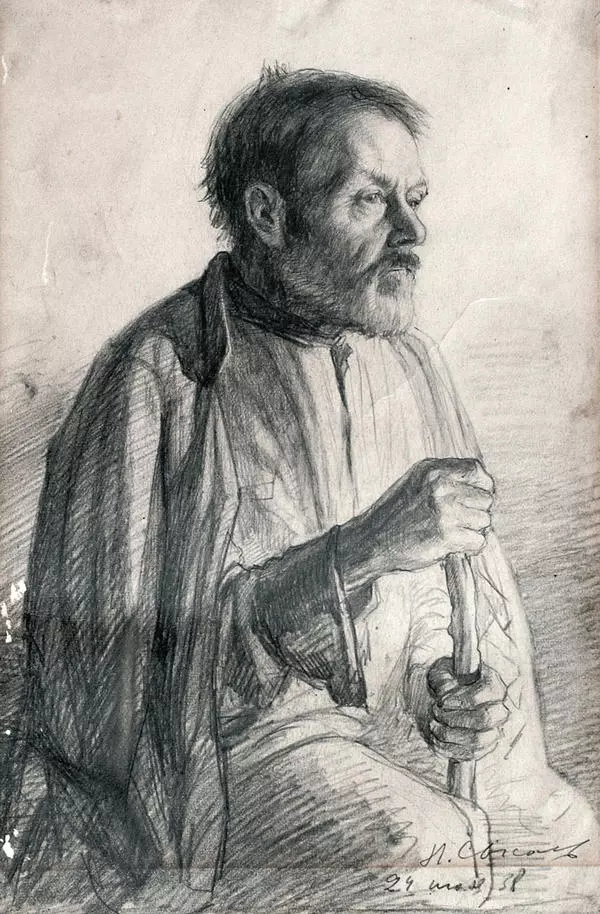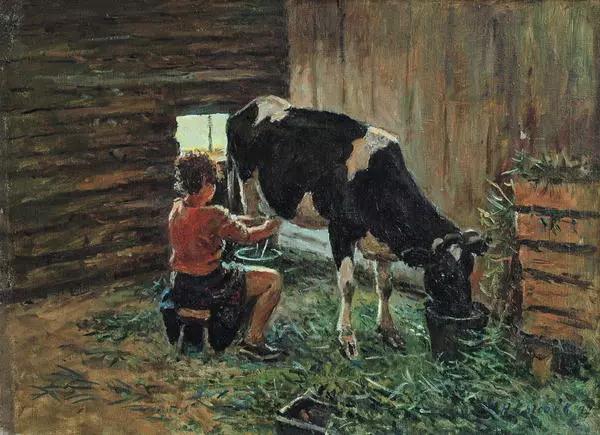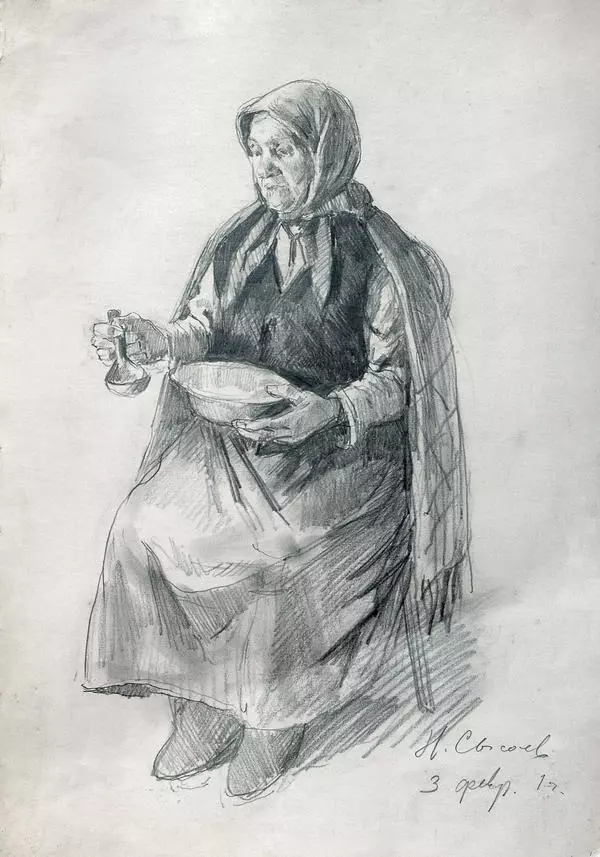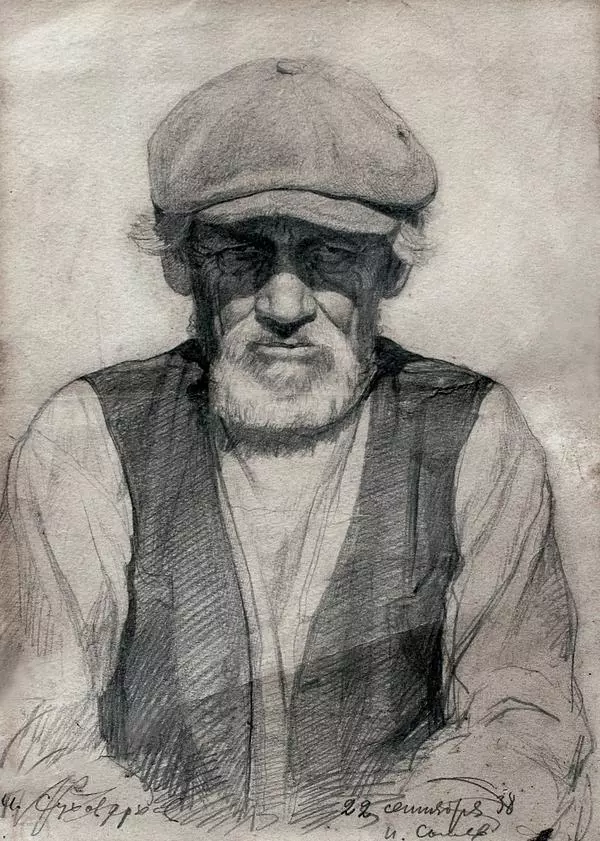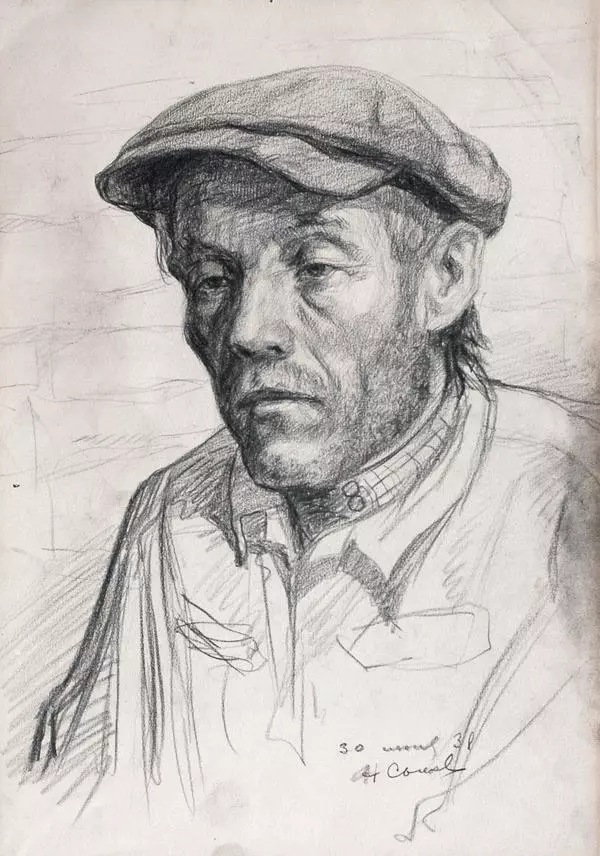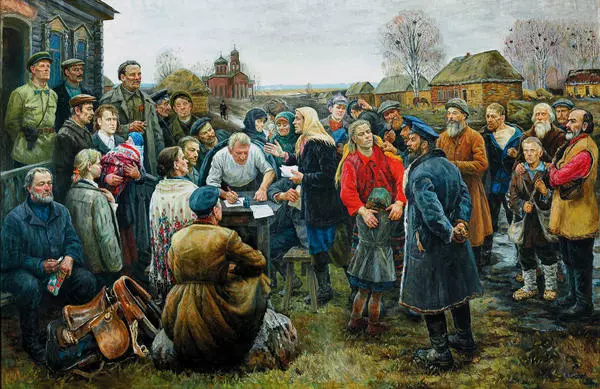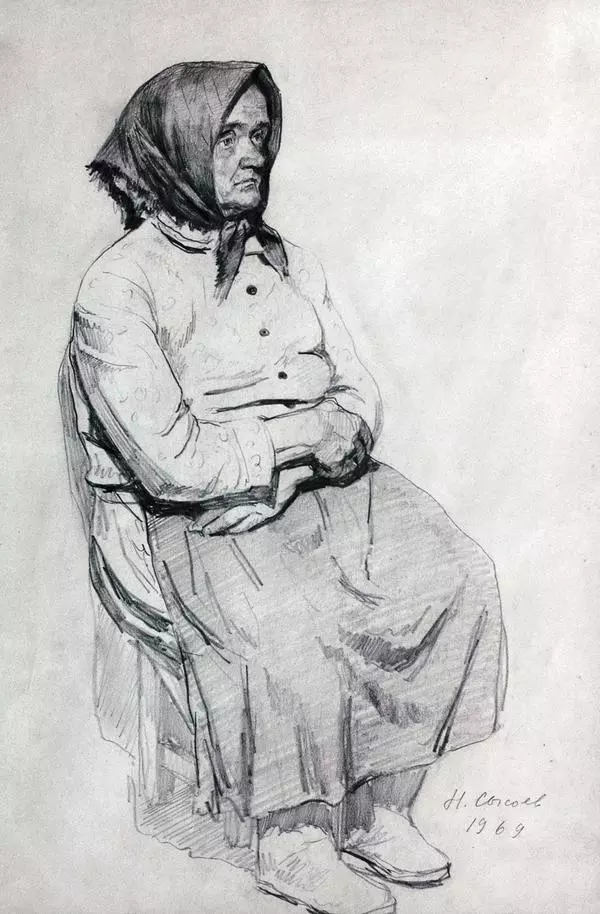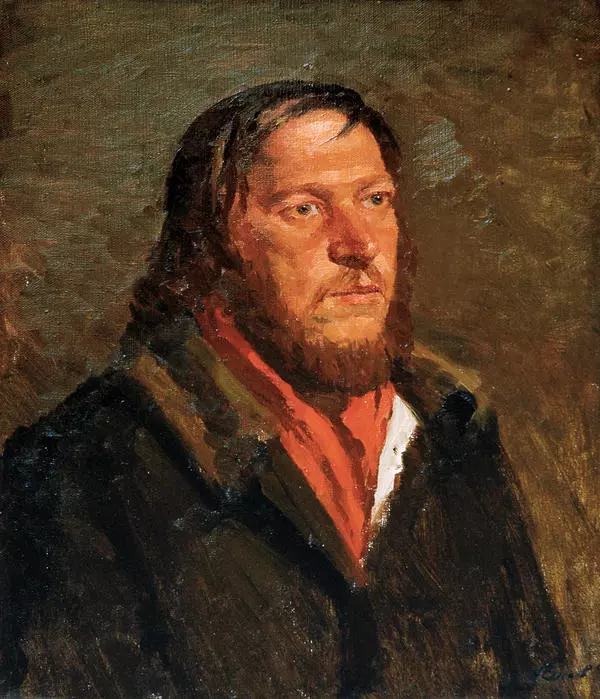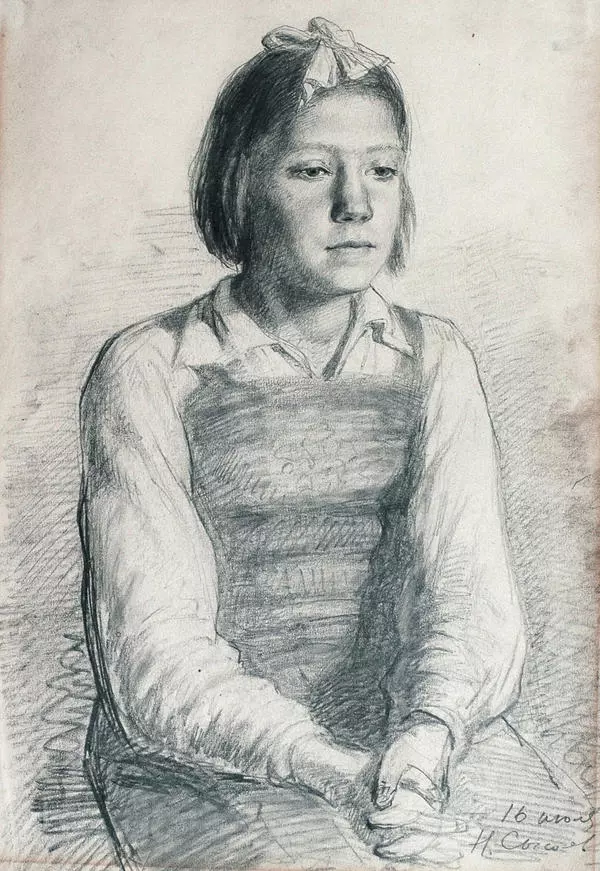The pencil sketch Nurse stands out among all the images created by Nikolai Sysoev. We saw a bright gallery of portraits of the villagers whom the artist had befriended. Each of these portraits is attractive and interesting in its own way. However, there is something special about this work. The sketch was made in 1940, while Sysoev was still a student at V. Surikov Moscow State Academy Art Institute. He did a lot of drawing, practicing in the evenings with his fellow students.
The sketch depicts a girl wearing Red Cross nurse uniform. If you did not know that the drawing was created in 1940, the you would be forgiven for thinking that it is pre-revolutionary. It should be mentioned that the uniform of Soviet nurses was very similar to the one worn before 1917. Back in the 1940s, nurses wore a long white headscarf that almost completely covered the hair. There is a very good reason why the tradition of wearing headcloths exists, and it has deep roots. Before the Russian Revolution, the white outer garment that covered the entire body symbolized the nurse’s renunciation of the outside world and her focus on the mission of saving lives. Being a nurse implied not only providing first aid, but also being an example of compassion and help for the disadvantaged and destitute people in everyday life. In addition to participating in hostilities, Red Cross nurses treated people at Soviet construction sites and in areas of floods, fire, famine and disease.
As a realist artist, Nikolai Sysoev perfectly portrayed the image of a young nurse: a focused and deep look in her eyes and straight face. The angle at which the girl is sitting is of particular interest. In previous works, most of the peasants he drew posed en face or at a half-turn. They openly looked either at the viewer or into distance. In this sketch the model is sitting. Her hands are tightly joined on her knees, thereby looping the composition within itself. It is particularly noteworthy that the artist portrays the nurse looking straight on over her shoulder, as if hiding from him. The uniform is drawn in simplified form, in broad, free lines. Sysoev intentionally covers the entire lower part of the figure with folds, leaving only the nurse’s face and hands open. Thus, he focuses our attention on the key aspects of the nurse’s work, i.e. saving the lives of people and helping them overcome hardships.
The sketch depicts a girl wearing Red Cross nurse uniform. If you did not know that the drawing was created in 1940, the you would be forgiven for thinking that it is pre-revolutionary. It should be mentioned that the uniform of Soviet nurses was very similar to the one worn before 1917. Back in the 1940s, nurses wore a long white headscarf that almost completely covered the hair. There is a very good reason why the tradition of wearing headcloths exists, and it has deep roots. Before the Russian Revolution, the white outer garment that covered the entire body symbolized the nurse’s renunciation of the outside world and her focus on the mission of saving lives. Being a nurse implied not only providing first aid, but also being an example of compassion and help for the disadvantaged and destitute people in everyday life. In addition to participating in hostilities, Red Cross nurses treated people at Soviet construction sites and in areas of floods, fire, famine and disease.
As a realist artist, Nikolai Sysoev perfectly portrayed the image of a young nurse: a focused and deep look in her eyes and straight face. The angle at which the girl is sitting is of particular interest. In previous works, most of the peasants he drew posed en face or at a half-turn. They openly looked either at the viewer or into distance. In this sketch the model is sitting. Her hands are tightly joined on her knees, thereby looping the composition within itself. It is particularly noteworthy that the artist portrays the nurse looking straight on over her shoulder, as if hiding from him. The uniform is drawn in simplified form, in broad, free lines. Sysoev intentionally covers the entire lower part of the figure with folds, leaving only the nurse’s face and hands open. Thus, he focuses our attention on the key aspects of the nurse’s work, i.e. saving the lives of people and helping them overcome hardships.
